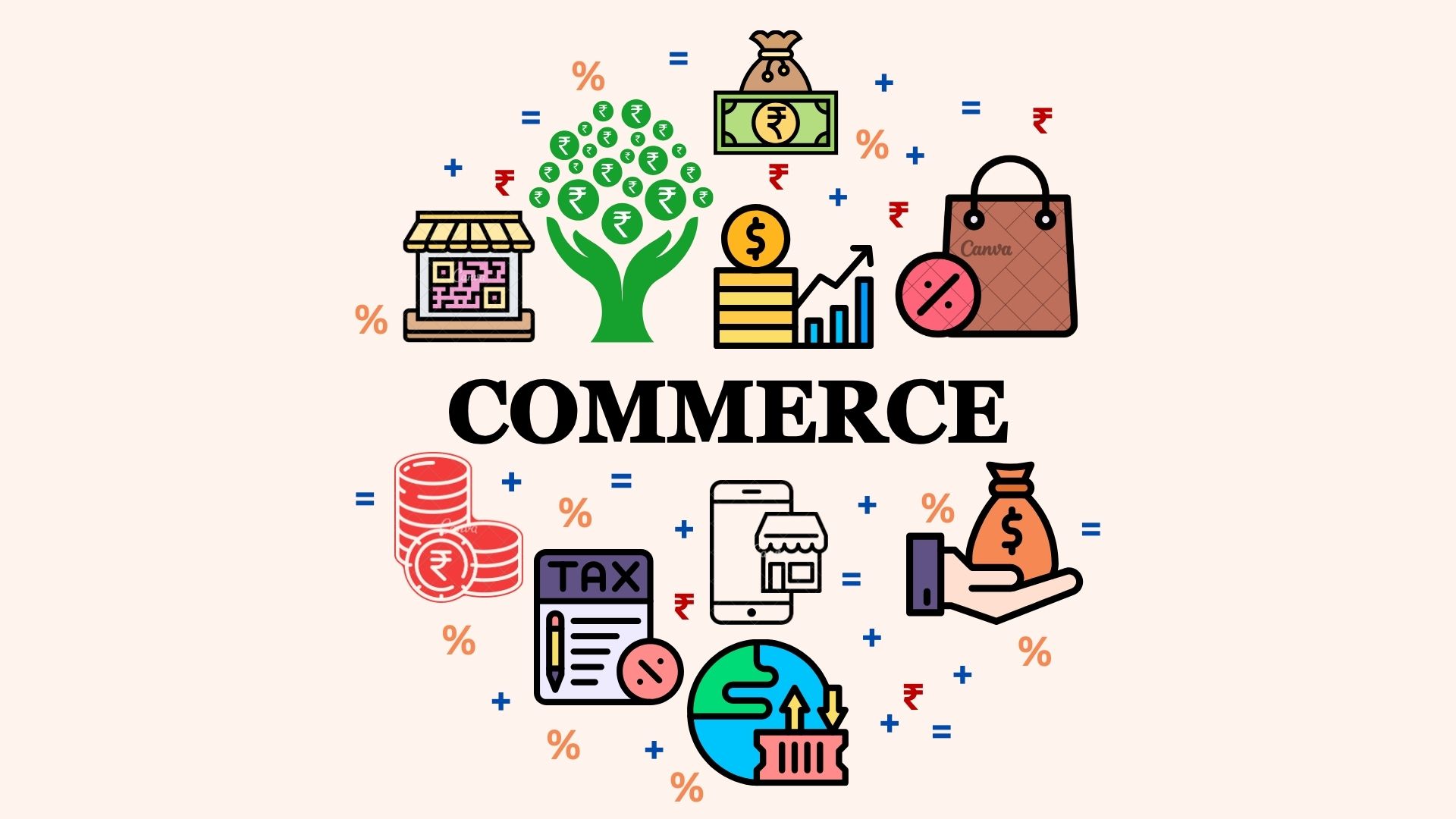
Commerce encompasses the activities involved in buying and selling goods and services, typically conducted on a large scale. It is fundamentally about the exchange of value, often resulting in a profit for the parties involved. In contemporary contexts, commerce frequently refers to e-commerce, which involves the buying and selling of products or services over electronic platforms such as the internet.
Key Components of Commerce:
Trade:
Trade is a core aspect of commerce and involves the exchange of goods and services. It can occur either domestically (within a country's borders) or internationally (between countries). Trade contributes significantly to economic growth by facilitating the flow of goods and services across regions.Aids to Trade:
Aids to trade encompass various services and infrastructure that support commercial activities. These include transportation (e.g., logistics and shipping), warehousing, distribution networks, advertising and marketing, insurance, and banking services. Aids to trade play crucial roles in facilitating smooth transactions, reducing risks, and enhancing the efficiency of commerce operations.
Primary Commerce Business Models:
Business-to-Consumer (B2C):
B2C commerce involves businesses selling products or services directly to individual consumers. Examples include online retail stores and service providers catering directly to end-users.Business-to-Business (B2B)
B2B commerce refers to transactions between businesses, where one business sells products or services to another business. This model often involves larger volumes and specialized products or services tailored to business needs.Business-to-Administration (B2A):
B2A commerce involves businesses providing products or services to government agencies or administrations. This includes government procurement processes and e-government services.Consumer-to-Administration (C2A):
C2A commerce involves individual consumers interacting with government agencies or administrations. Examples include paying taxes online or applying for official documents through government portals.Consumer-to-Consumer (C2C):
C2C commerce involves transactions where individual consumers sell products or services directly to other consumers. Online marketplaces and classified ads platforms facilitate C2C transactions.Consumer-to-Business (C2B):
C2B commerce occurs when individual consumers offer products or services to businesses. This includes freelancers, consultants, and influencers offering their expertise or content to businesses.Direct-to-Consumer (DTC):
DTC commerce refers to brands or manufacturers selling their products directly to consumers, bypassing traditional retail channels. DTC brands often leverage e-commerce platforms and digital marketing to reach and engage consumers directly.